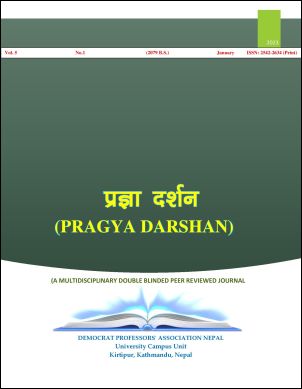Statistical Analysis of Rainfall Distribution in Biratnagar, Nepal: A case study
DOI:
https://doi.org/10.3126/pdmdj.v5i1.52307Keywords:
Statistical analysis, Biratnagar, Precipitation Concentration Index, Mann-Kendall test, Normal rainfallAbstract
Rainfall is a key component in the construction of many engineering projects, including canals, bridges, culverts, and road drainage systems. The primary goal of this study is to ascertain the annual, monthly and seasonal fluctuations in rainfall in Biratnagar, Nepal over a period of 10 years (2010-2019). The mean, standard deviation, coefficient of variation, skewness, kurtosis, Precipitation Concentration Index (PCI), normal rainfall along with Mann-Kendall test were calculated to check the rainfall variations. The annual data showed the biggest varieties in rainfall, with an average annual rainfall of 1542.43 mm during a ten years period. Furthermore, an erratic monthly rainfall pattern was found by the non-parametric Mann-Kendall test. However, the test value for each month was non-significant at the 5% level of significance. We also found that the rainfall is least in the winter and most during monsoon season. Based on these calculations, It is seen that the pattern of rainfall is inconsistent or unpredictable. However, present study will aid in the understanding of rainfall variations and trends, assisting in the management of water resources, ecosystems, irrigation, sustainable agricultural planning, engineering structural design, and other areas.




